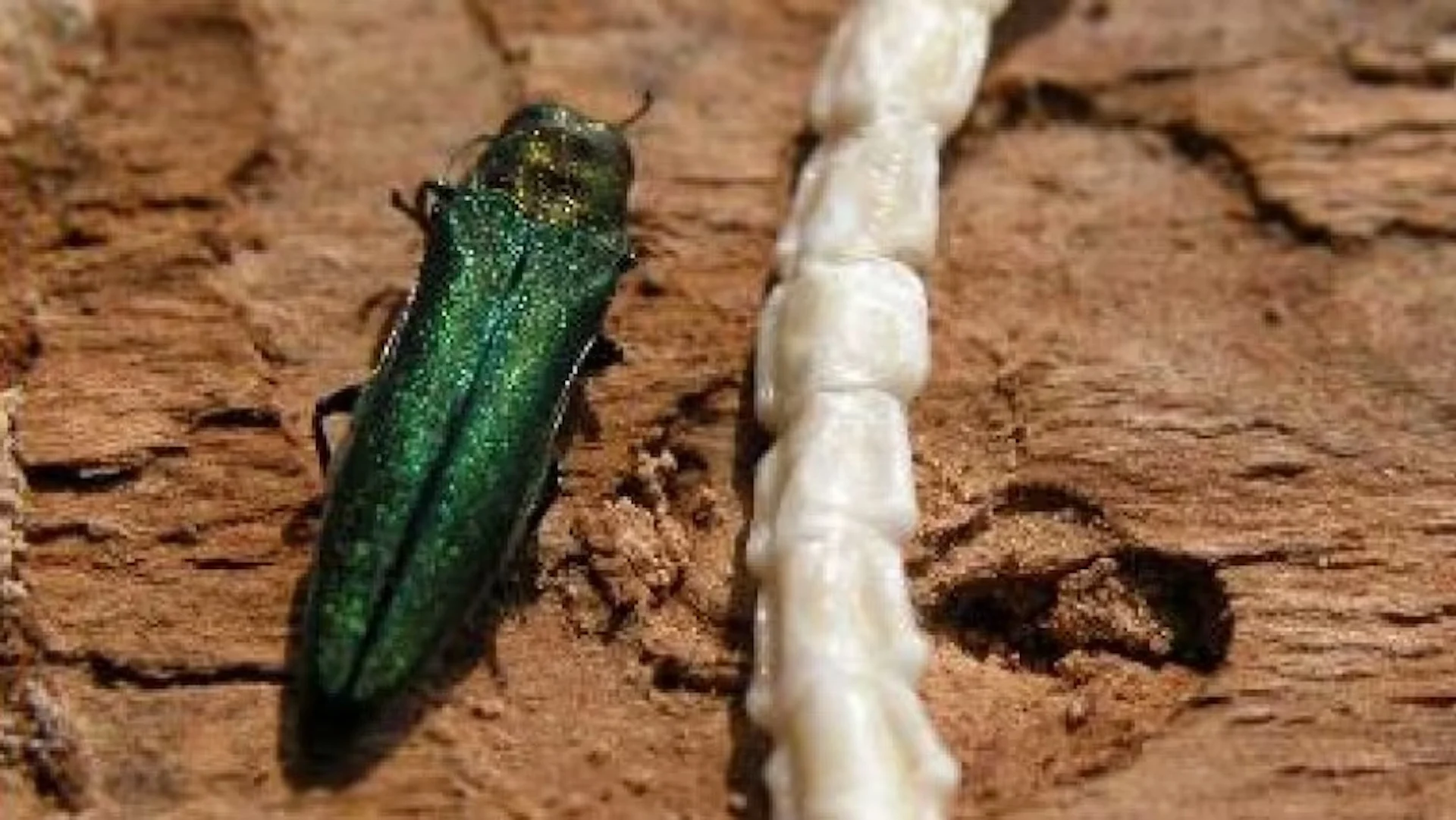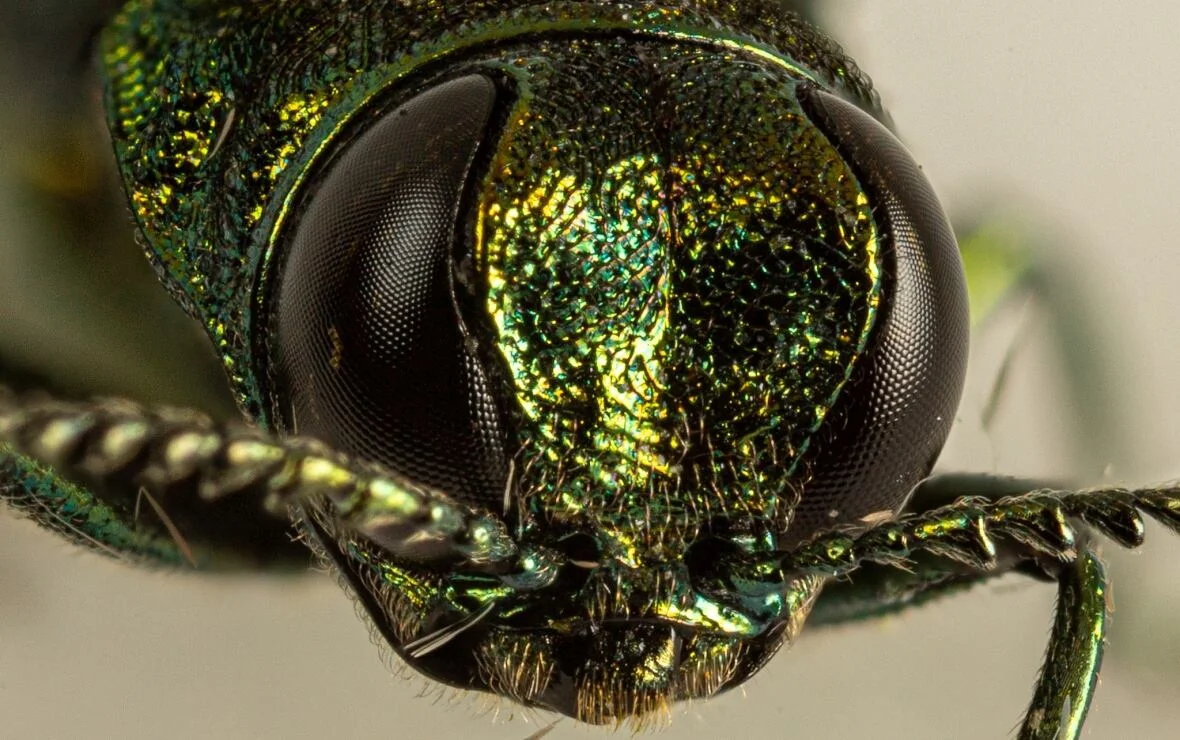
Emerald ash borer has killed millions of trees. Calgary bracing for its arrival
An invasive beetle species — infamous for decimating ash tree populations in North America — is making its way west across Canada, and Calgary is bracing for its potential arrival.
The emerald ash borer was first detected in Canada in 2002, in Ontario. Despite efforts to contain it, the beetle eventually spread to Quebec, New Brunswick, Nova Scotia, Manitoba and, most recently, British Columbia.
Now, the City of Calgary predicts the species could arrive this year.
With more than 70,000 ash trees on public land and many more on private property, the city says the insect poses a severe threat to Calgary's urban canopy.
"We have been proactively monitoring for it for several years," a city spokesperson said in an emailed statement.

An example of a prism trap, used to monitor for the emerald ash borer. (Brian MacKay/CBC)
The city set up 200 traps as part of its invasive species monitoring program, which will be in place until September.
"Early detection of invasive species is key to slowing their spread and reducing economic and environmental costs associated with their establishment," the city statement said.
Entomologists and municipalities that have spent millions of dollars trying to fight the spread of the emerald ash borer say monitoring is important but the public could play a crucial role in keeping Calgary's tree canopy safe.
Burn it where you buy it
According to the Government of Canada, the emerald ash borer has killed millions of trees in the country's forested and urban areas.
The adult beetle feeds on the foliage of the tree, but it's the larvae that do most of the damage. They feed on the tissue of the tree beneath the bark, preventing water and nutrients from circulating throughout the tree and eventually killing it.
The Canadian Food Inspection Agency (CFIA) says there is significant risk of it being introduced to Alberta, but there are ways to reduce the risk of it spreading.

So-called 'S-galleries' are created by emerald ash borer larvae as they feed on the nutrients of the ash tree. CFIA says other signs of an infestation include woodpecker feeding, leaf yellowing and branch dieback. The insect also forms a 'D' shaped exit hole on trees. (Brian MacKay/CBC)
Ken Fry, an entomology instructor at Olds College, says the invasive beetle primarily spreads through firewood.
His request to the public?
"Please destroy all your firewood. Burn it where you buy it. Don't transport it," said Fry.
The CFIA said moving ash firewood or any other ash article out of a regulated area — where the emerald ash borer is found — is prohibited.
A million-dollar problem
In 2016, Montreal committed $18 million over three years to fight the ash borer. In 2018, the City of Winnipeg estimated that managing the impact would cost $105 million over 10 years — and potentially all of its 357,000 ash trees.
In Ontario, where the insect was first detected, municipalities are urging Calgary to block the beetle — before it takes a big bite out of the city's budget.
"It is one of those particular pests that left a lot of destruction in its wake," said Yemi Adeyeye, municipal forester for the City of Windsor.

The emerald ash borer is native to parts of Asia. It's believed that the first emerald ash borer arrived in Canada through wooden shipping crates. (Submitted by Brent Sinclair)
Windsor lost about 7,000 ash trees due to the emerald ash borer. There are only a couple hundred left today, said Adeyeye.
"There are situations where, even right now in Windsor, we occasionally find a tree that seems to have suffered from [the beetle]. So it's not really 100 per cent gone."
In Sudbury, Ont., the city is in the process of removing all of its 1,200 public ash trees after a recent invasion.
Stephen Monet, Greater Sudbury's manager of strategic and environmental planning services, says his advice for Calgary is to prepare as best it can.
"It's a costly process for us because it's hard to plan for something of that scale for us. I can't imagine 70,000 ash trees having to, in some way, be removed," said Monet.
Alberta's natural barriers
Back in Olds, Alta., Fry says Alberta is unique. The Rockies and Prairies could act as natural barriers to keep the insects out, and ash trees in the province are generally more dispersed than they are in Ontario.
But, he says, there are many unanswered questions.
"We honestly don't know a lot about how it's going to move through our landscape, whether it can survive under those circumstances and keep its populations high enough," said Fry.
"But nature, if anything, it's resilient, it's inventive, it's adaptable. So we can't say we're out of the woods."
WATCH: These tiny invasive bugs are devastating hemlocks in Nova Scotia
Thumbnail courtesy of Government of Ontario via CBC.
The story was originally written by Karina Zapata and published for CBC News.










